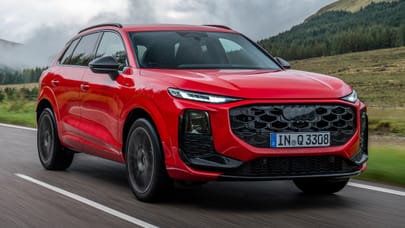
TG’s guide to coachbuilders: Zagato
When you absolutely, positively have to go fast, accept no substitutes

Who is it and when did it start?

This could only be Zagato – singularly focused on using bodywork to go faster. So that means it’ll have as small a frontal area as possible, be as lightweight as possible, and will likely have a double-bubble roof – so you can fit in the cabin in your racing helmet, of course.
Unlike so many coachbuilders, Zagato stayed a family business – and, crucially, stayed open. That means, since Ugo Zagato opened shop in 1919, it’s been a successful business, without resorting to corporate buyouts, decades-long hibernation or anything as depressing as that.
Advertisement - Page continues belowWhere is it based?

Of course it’s Milahn, dahling. Just like Carrozzeria Touring would do seven years later, Zagato set up shop in the best possible place: right on top of Alfa Romeo and within comfortable driving distance of Lancia, Fiat and Maserati. Later, when Ferrari and Lamborghini also set up shop within driving distance... we’d do a chef’s kiss, but it feels hollow, given that we’re the worst cooks in existence. Also, it wouldn’t come across so well in writing.
What cars has it built?

We’ll get some form of arthritis trying to type out every car that Zagato has had a hand in. Check out the picture above; that gives you a bit of an idea who Zagato has worked with. Suffice it to say that, among this litany of finely honed metal, Zagato’s responsible for some of the best classic Lancias ever made – and let the enormity of that sentence sink in.
Advertisement - Page continues belowHas it built anything other than cars?

And then some – literally planes, trains and automobiles. In fact, Ugo Zagato’s first creation – that predates Carrozzeria Zagato by a year – was an aeroplane... in, um, 1918. Which gives you some indication of what it was for.
But Zagato’s turned its sharp eye and deft hands to motorbikes with MV Agusta (a hallowed brand if ever there was one), Bombardier trains and even New Holland tractors. We’re just miffed that there’s no double-bubble roof on their combine harvester design.
Can you tell me one of its best cars?

We have a huge soft spot for the Fulvia Zagato, but it’s not worth entertaining any other answer than the Alfa Romeo Tubolare Zagato cars from the 1960s. The ultimate – in every sense of the word – is the TZ2, which one-ups the already staggeringly beautiful TZ1 by being lighter, faster and rarer. The Alfa Giulia’s 1.6-litre Nord engine was tweaked for 170 naturally aspirated horses, which could deliver the featherweight and fish-slippery racer to more than 150mph. Oh, and deliver class wins in roughly any race series that matters – 12 hours of Sebring, Targa Florio, 1000km of Nurburgring… we could go on listing races, but that’s hardly what either of us are here for.
But if you were to argue that Zagato’s best work was the Aston DB4 GT Zagato, we’d understand completely. Original design by the masters at Carrozzeria Touring, straight-six engine designed by an actual racer and doused in Zagato magic to create the perfect gentleman racer. Can anyone please explain how demand for this car didn’t extend to the original production run of 25 cars?
And one of its worst?

Well, the Zele was hardly a styling revelation. And as the slowest, least powerful and least... well, Zagato-ish car the coachbuilders had ever made. But then it was never meant to be powerful, fast or a styling revelation. It was a purely electric car decades ahead of (and also decades after) that being a thing people took remotely seriously. It could take you 50 miles at best – and would take two hours to do it – but that’s because it used just four 12-volt batteries. It was about making the absolute most out of the absolute least.
And you’d think that this would be in reaction to a fuel crisis or a recession or something like that. But no, the Zele came out one year before the 1973 oil crisis and the 1973–1975 recession. And no, before you ask, Zele doesn’t translate into ‘Crystal ball that you don’t have’.
With thanks to RM Sotheby’s for the pic of this adorable little electric muffin.
Tell me an interesting fact about Zagato.

One of motoring writers’ favourite refrains about Zagato is its weirdness. And it’s there in spades – just look to the odd kinks and lines of the Lancia Flavia Zagato for an example.
But that’s not where people tend to look.
Instead, the poster child for Zagato’s ‘there was supposed to be a box to think in?’ styling is the Alfa Romeo SZ. But while it was built by Zagato, it was designed by Robert Opron, the French designer also responsible for one of our favourite cars of all time – the Citroen SM. So, is that more of an interesting fact that’s not about Zagato? You decide.
Advertisement - Page continues belowWhat’s it doing now?

What it’s done for the past century or so, of course – adding speed, lightness and oddly desirable weirdness to top-tier sportscars. You’ll doubtless recall the simply incredible quartet of Zagato-bodied Astons we shot a little while back – if you don’t, we froze our giblets off in Dungeness for nothing – and that’s a bit of a taster of what Zagato is up to.
Trending this week
- Car Review
BMW 1 Series







